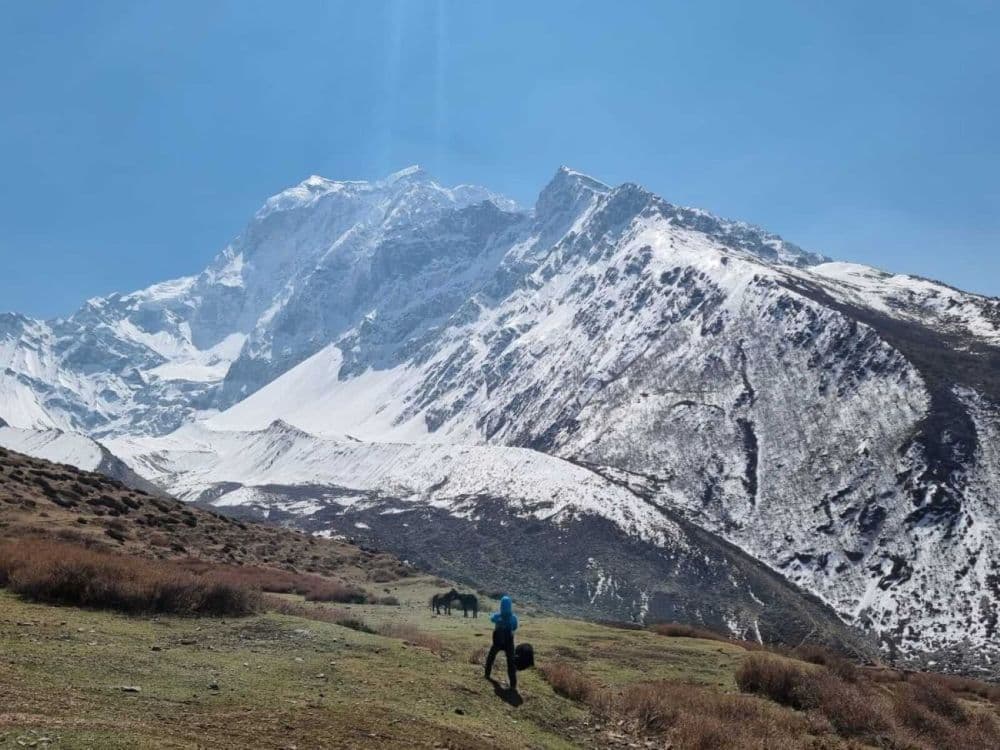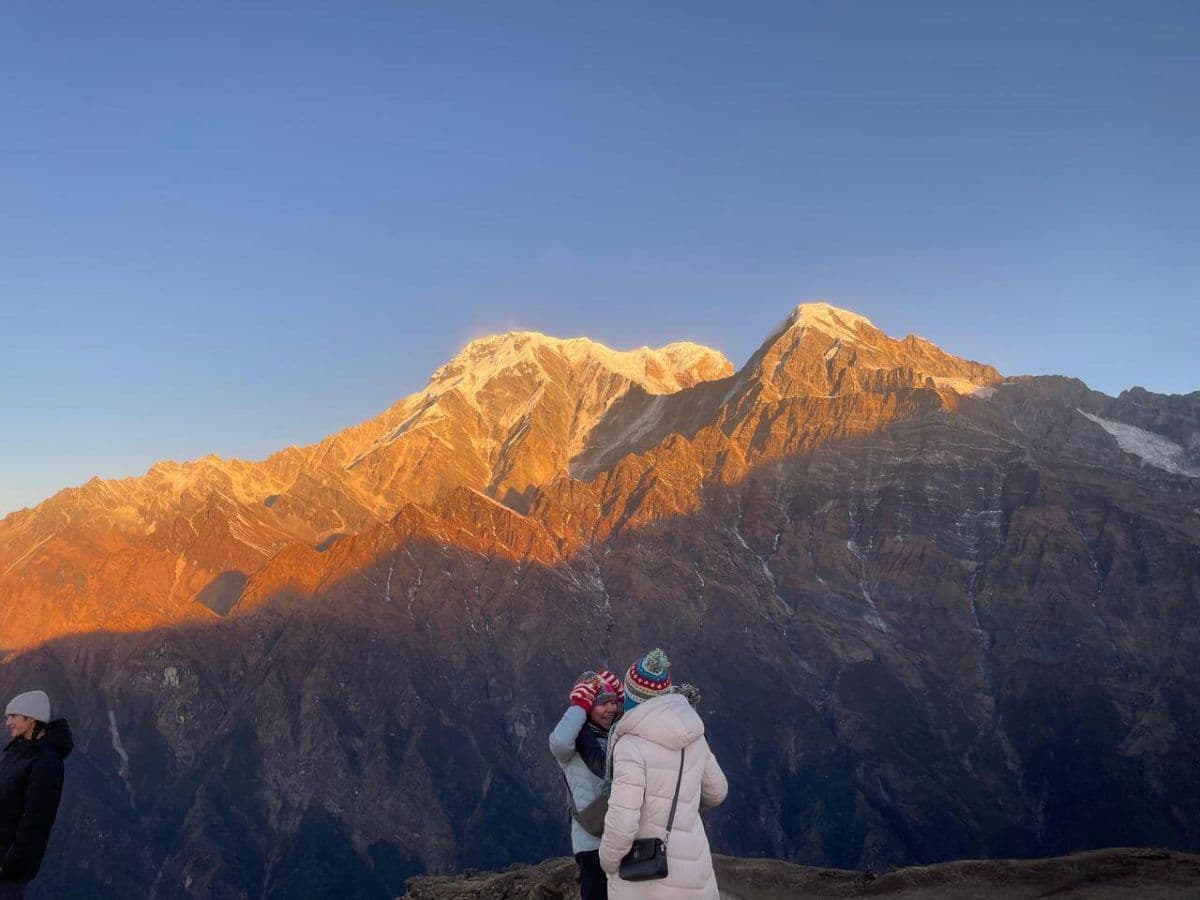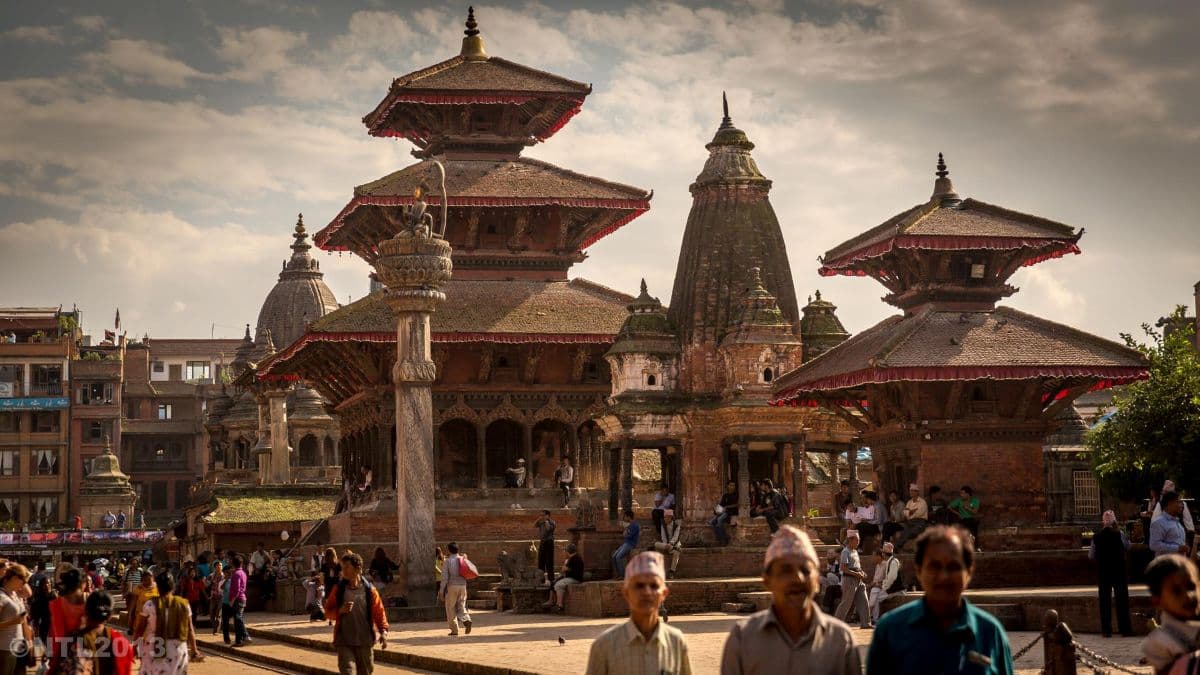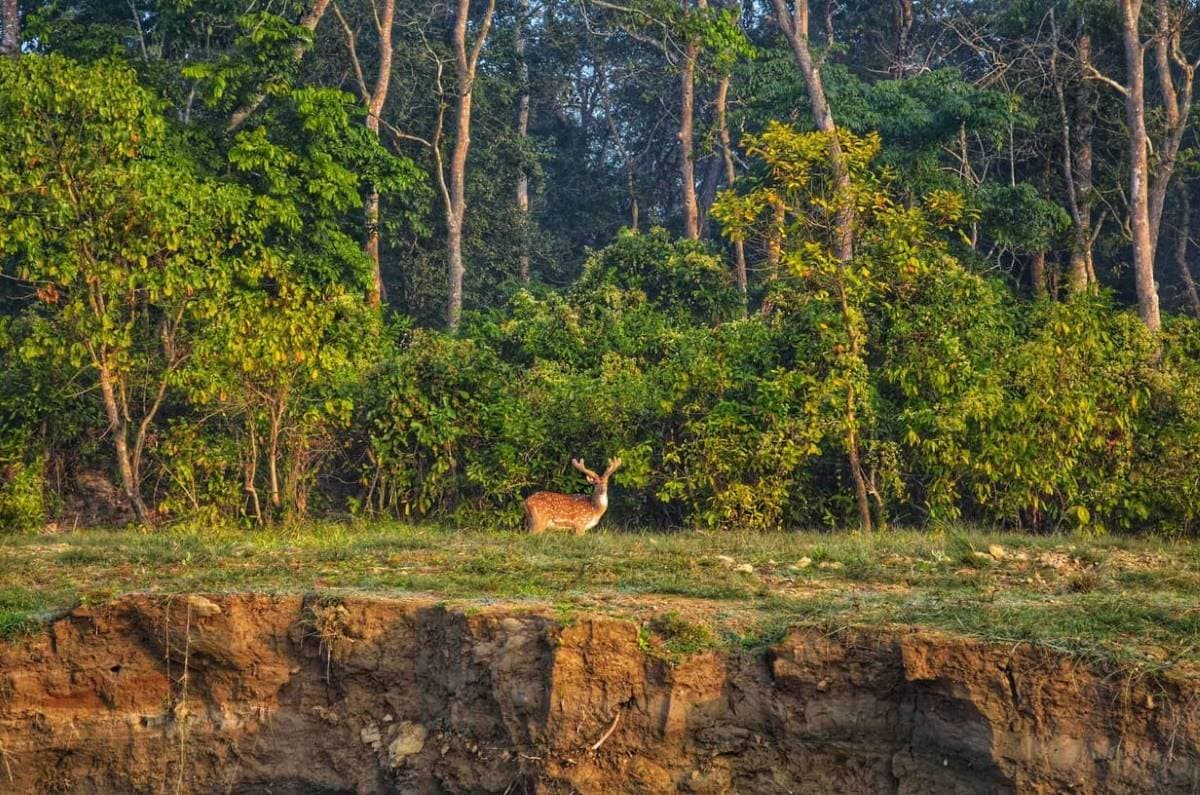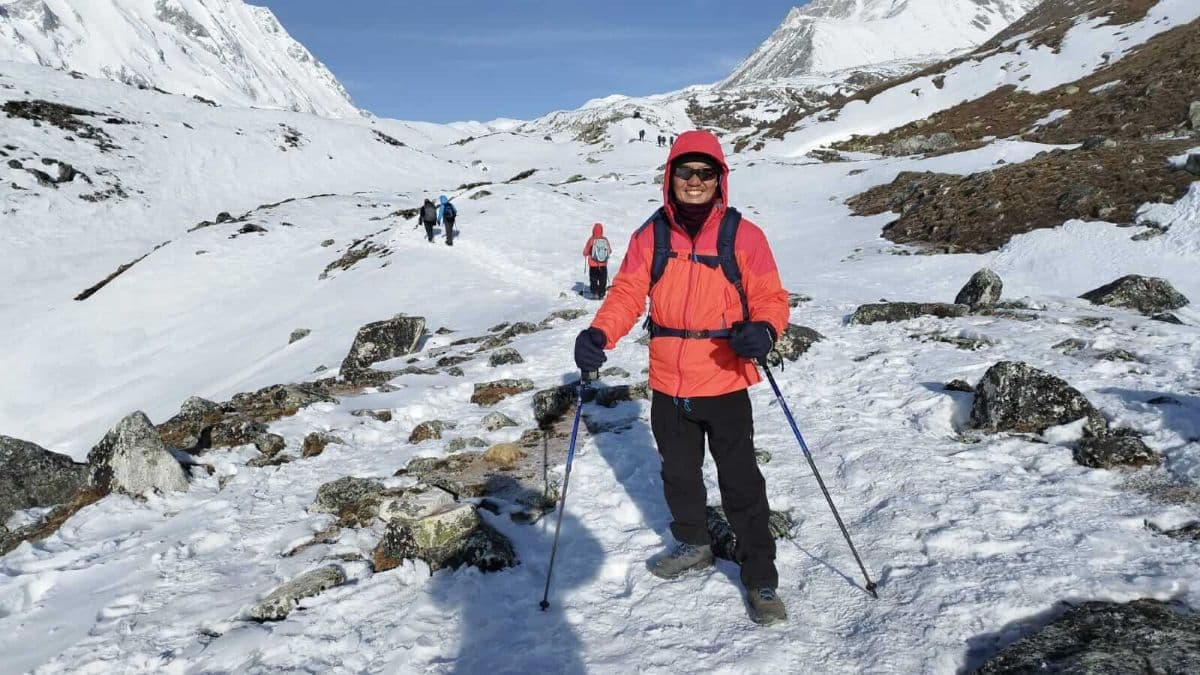
Unlock the Summit : Master High Altitude Treks Like a Pro
Are you planning a high altitude trek, like the iconic Mount Everest Trek or the breathtaking Annapurna Circuit Trek? Walking at high altitudes, where the air becomes thin and oxygen levels drop, presents unique challenges and rewards. As an experienced travel and tour operator in Nepal with over 40 years of experience , We’ve encountered these highs and lows firsthand. In this comprehensive guide, we'll provide you with valuable insights on how to prepare for and conquer high altitude treks around the world. By following this guide, you'll be equipped to embrace the beauty and awe-inspiring landscapes that await you in high altitude regions. So, let's dive in!
Understanding the Challenges of High Altitude Hiking
High altitude trek presents unique challenges that differ from lower altitude treks. It's important to familiarize yourself with these challenges to adequately prepare. Here are a few key factors to consider:
Thin Air and Reduced Oxygen Levels: As you ascend to higher altitudes, the air becomes thinner, resulting in decreased oxygen levels. This can lead to breathlessness, fatigue, and difficulty in physical exertion.
Altitude Sickness: Altitude sickness, also known as acute mountain sickness (AMS), is a common concern for trekkers at high altitudes. Symptoms include headache, dizziness, nausea, and shortness of breath. Understanding the signs and prevention strategies is crucial for a safe journey.
Extreme Weather Conditions: High altitude regions are known for their unpredictable and harsh weather conditions. Rapid temperature changes, high winds, and sudden snowfall are common. Being prepared for these conditions is vital for your safety and well-being.
Remote and Challenging Terrains: High altitude treks often involve rugged and challenging terrains, including steep ascents and descents, rocky trails, and narrow paths. Proper footwear, trekking poles, and navigation skills are necessary to navigate these terrains.
By recognizing and preparing for these challenges, you'll be better equipped to conquer high altitude hikes and make a memorable adventure.
Medical Considerations and Preparations
When preparing for a high altitude hiking adventure, it's crucial to prioritize your health and safety. Here are some key considerations and preparations to keep in mind:
Consulting with a Doctor or Healthcare Professional
Before going on a high altitude trek, it is highly recommended that you consult with a doctor or healthcare professional. They can assess your overall health, provide personalized advice and address any specific medical concerns you may have.
Here's why this step is essential:
Pre-existing Medical Conditions: If you have any pre-existing medical conditions, such as heart or lung problems, it's vital to seek medical clearance before undertaking high altitude hiking. Certain conditions may require additional precautions or even restrict your participation in such activities.
Medications: Inform your doctor about any medications you are currently taking. They can evaluate whether any adjustments or additional medications are necessary to accommodate the challenges of high altitude hiking.
Vaccinations: Depending on your destination, there may be specific vaccinations recommended or required. Your healthcare professional can advise you on the necessary immunizations to protect against potential illnesses or diseases.
Acclimatization Strategies for High Altitude:
Proper acclimatization is crucial for minimizing the risks of altitude sickness and ensuring a safe and enjoyable trek.
Consider the following strategies:
Gradual Ascent: Ascend gradually to higher altitudes, allowing your body time to adjust to the decreasing oxygen levels. Avoid rapid altitude gains, as this increases the risk of altitude sickness.
Rest and hydrate: Take regular breaks during your ascent to allow your body to rest and recover. Hydration is key, so drink plenty of fluids to combat dehydration at high altitudes.
Climbing High, Sleeping Low: This technique involves climbing to a higher altitude during the day and descending to sleep at a lower altitude. It helps in the acclimatization process by exposing your body to higher altitudes while providing adequate rest at lower levels.
Managing Altitude Sickness and Acute Mountain Sickness:
Altitude sickness, including acute mountain sickness (AMS), can occur when ascending to high altitudes too quickly. Here's what you need to know to manage altitude sickness effectively:
Recognizing your Symptoms: Familiarize yourself with the symptoms of altitude sickness including headache, nausea, dizziness, fatigue, and loss of appetite. If you experience these symptoms, it's essential to take them seriously and respond accordingly.
Descend if Necessary: If symptoms of altitude sickness become severe, it is very crucial to descend to a lower altitude immediately. Descending allows your body to recover and can prevent further complications.
Medications: There are medications available, such as acetazolamide, that can help prevent and manage altitude sickness. Consult with a healthcare professional to determine if medication is suitable for you and understand the proper usage.
By seeking advice from medical professionals and following proper acclimatization strategies, you can reduce the risks associated with high altitude hiking and ensure a safer and more enjoyable experience.
Note : Remember, the insights and recommendations provided here are general in nature. It's essential to consult with a healthcare professional or experts in the field for personalized guidance based on your specific circumstances.
Essential Gear and Equipment for High Altitude Trekking
Having the right gear and equipment is crucial for a safe and comfortable high altitude hiking experience. Here are tried and tested clothing and equipment recommendations, along with packing essentials and the importance of proper footwear and protection:
Tried and Tested Clothing and Equipment Recommendations
Layered Clothing: Dressing in layers allows you to adapt to changing weather conditions and regulate body temperature. Opt for moisture-wicking base layers, insulating mid-layers, and waterproof outer shells. Pack a variety of clothing options to accommodate different temperatures and weather patterns.
Insulated Jacket: Invest in a high-quality insulated jacket to provide warmth during cold temperatures and at higher altitudes. Look for jackets with synthetic or down insulation that are lightweight and packable.
Waterproof and Windproof Pants: Choose waterproof and windproof pants to protect yourself from rain, snow, and strong winds. Look for pants with breathable fabrics and features like reinforced knees and seat for durability.
Hiking Boots: Invest in a sturdy pair of hiking boots that provide ankle support and have a good grip on various terrains. Ensure they are comfortable, properly fitted, and broken in before your trek to prevent blisters and discomfort.
Trekking Poles: Trekking poles provide stability and support, especially when navigating steep ascents and descents. They help reduce strain on your joints and improve balance. Look for adjustable and lightweight poles with comfortable grips.
Backpack: Choose a backpack that is spacious enough to carry your essentials but not too heavy or bulky. Look for a backpack with a supportive suspension system, adjustable straps, and compartments for organized storage.
Packing Essentials for High Altitude Hiking
Sleeping Bag: Select a sleeping bag that is suitable for the expected temperatures during your trek. Ensure it is lightweight, compact, and has a good warmth-to-weight ratio.
Headlamp: A headlamp is essential for navigating in low-light conditions or during early morning starts. Choose a headlamp with adjustable brightness settings and long battery life.
Water Bottles or Hydration System: Carry an adequate supply of water bottles or a hydration system to stay hydrated throughout your hike. Consider insulation to prevent freezing at higher altitudes.
Sun Protection: Protect yourself from the strong sun at high altitudes. Pack sunscreen with a high SPF, a wide-brimmed hat, sunglasses, and lip balm with SPF.
First Aid Kit: Carry a well-stocked first aid kit that includes essential items like bandages, antiseptic ointment, blister treatment, pain relievers, and any necessary prescription medications.
Importance of Proper Footwear and Protection
Choose High-Quality Socks: Invest in moisture-wicking, breathable socks that provide cushioning and prevent blisters. Consider wearing liner socks underneath for added protection.
Gaiters: Gaiters are essential for keeping debris, snow, and water out of your boots. They provide an extra layer of protection and keep your feet dry.
Proper Footwear Care: Take care of your hiking boots by cleaning them after each trek and ensuring they are properly waterproofed. Regularly inspect them for wear and tear and replace them if needed.
Remember, gear and equipment requirements may vary based on the specific trek and weather conditions. It's essential to research and consult with experienced hikers or outdoor gear specialists to ensure you have the appropriate gear for your high altitude hike.
Mental Preparation and Health
High altitude trek not only tests your physical endurance but also requires mental resilience and preparation. Here are some essential tips for developing a positive mindset, coping with challenges and managing stress and anxiety while ascending to high altitude:
Developing a Positive Mindset and Mental Resilience
Set Realistic Expectations: Understand that high altitude hiking comes with its challenges. Setting realistic expectations can help you stay focused and motivated throughout the trek.
Visualize Success: Use visualization techniques to imagine yourself successfully completing the hike. Visualize the breathtaking views, the sense of accomplishment, and the joy of reaching your goals. This can boost your confidence and mental resilience.
Positive Self-Talk: Practice positive self-talk to overcome self-doubt and build confidence. Replace negative thoughts with positive affirmations, such as "I am strong and capable," or "I can overcome any challenge."
Embrace the Journey: Focus on the present moment and enjoy the journey rather than fixating solely on reaching the destination. Appreciate the natural beauty, the camaraderie with fellow hikers, and the personal growth that comes with the experience.
Coping with Challenges and Overcoming Obstacles
Break It Down: Divide the trek into smaller, manageable goals. Celebrate each milestone you achieve along the way, whether it's reaching a certain altitude or completing a specific segment of the trail.
Take Breaks and Rest: Listen to your body and take breaks when needed. Resting and allowing yourself time to recover will help prevent burnout and improve your overall performance.
Practice Mindfulness: Engage in mindfulness techniques to stay grounded and focused. Pay attention to your breath, observe your surroundings, and stay present in the moment. This can help alleviate anxiety and keep your mind calm.
Managing Stress and Anxiety during High Altitude Hiking
Breathing Exercises: Practice deep breathing exercises to reduce stress and anxiety. Focus on slow, deep breaths, inhaling through your nose and exhaling through your mouth. This can help regulate your heart rate and promote relaxation.
Meditation or Mindfulness: Incorporate meditation or mindfulness practices into your daily routine, both before and during the hike. This can help quiet your mind, increase self-awareness, and improve overall mental well-being.
Connect with Nature: Take moments to connect with the natural environment around you. Spend time appreciating the beauty of the mountains, the sound of the wind, or the sight of a serene lake. Nature has a calming effect and can help reduce stress levels.
Seek Support: If you find yourself struggling with stress or anxiety, don't hesitate to reach out to your fellow hikers or trek leaders for support. Sharing your concerns and talking about your feelings can provide relief and help you gain perspective.
Remember, mental preparation and maintaining mental well-being are just as important as physical training when it comes to high altitude hiking. Incorporate these techniques into your preparation and practice them during the trek to ensure a positive and enjoyable experience.
As you embark on your high altitude hiking adventure, remember to respect the mountains and the environment around you. Be mindful of your limits, listen to your body and make safety your top priority.With proper preparation, a positive mindset and a commitment to safety you can have a safe and memorable high altitude hiking experience. So lace up your boots, breathe in the fresh mountain air and embark on this incredible adventure with confidence.
Note: Remember to always check the latest guidelines and recommendations from local authorities and experienced professionals before embarking on a high altitude hike.
Best of luck on your high altitude trek.
